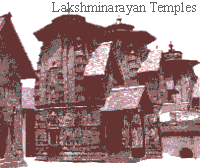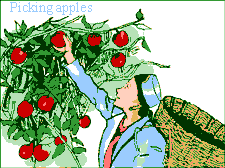
Dimdima
Online Children's Magazine from India

Dimdima
Online Children's Magazine from India
Himachal Pradesh is called the ‘Apple State’ because the country’s first apples were cultivated here. It was also the first Indian state to process potatoes. Asia’s largest fruit-processing plant and the world’s highest cricket grounds are located at Parwanoo and Chail (near Shimla) in Himachal Pradesh.
Area : Around 55,673 km
Population : 60,70,305.
Main Languages : Hindi and Pahari (of various dialects).
Capital : Shimla
Location :
460 m to 6,600 m high in the western Himalayas Jammu and Kashmir, U.P., Haryana and Punjab border it on the north, south-east, south and west. It shares an international border with Tibet on the east.
Rivers :
Snow-fed, perennial rivers like the hydel power generation to the state.
Precipitation :
The state receives an average rainfall of 181.6 cm, the wettest being Dharmasala. The regions in the north experience bitter winters with heavy snowfall.
Other Hill Stations :
Dharmasala, a major centre of Tibetan culture, is at present home to the Dalai Lama. Narkanda, situated at a height of 2700 m, has the magnificent snow-clad Himalayan peak, the Kinner Kailash. Kulu on the bank of the Beas is famous for apple orchards. The picturesque Dalhousie, where stately deodars and oak trees grow, is a hill station that spreads over five hills at altitudes of 2039,. Tea gardens and pine forests abound in Palampur, located at a height of 1219 m. Bir and Billing, two of the best aerosport sites in the world, host the country’s only international hand-gliding festival. Kangra is famous for its miniature paintings.
Scenically beautiful Khajjiar, is often referred to as ‘Mini Switzerland’.
THE early inhabitants of the Himachal region were nomadic tribes who eventually settled down to form tribal kingdoms ruled by chiefs or 'rajas' as they styled themselves. Later, more kingdoms were set up when Rajput adventurers carved out principalities for themselves in the hills.
All these tiny states were constantly at war with each other never uniting even in the face of external aggression. As a result they were easily absorbed by any Indian empire that spread northwards. Once that empire collapsed, the various Himachal states would reassert their independence and start fighting each other again.
The Mauryas, the Kushans, the Guptas and the Mughals all held sway over the region at various times.
In the 19th century, Nepalese, Sikh and British ambitions caused turmoil in the region and finally the British established their supremacy there.
When the British left in 1947 some of the rulers tried to re-establish their independence but the will of the people prevailed and on 15 April 1948, 31 princely states merged to form Himachal Pradesh.
When the Punjab was reorganised in 1966, some areas like the hill districts of Kangra, Kullu, Lahul-Spiti and Shimla were transferred to Himachal Pradesh.
On 25 January 1971 Himachal Pradesh became the 18th state of the Indian Union.
Buddhist monasteries or gompas and pahari temples dot the beautiful valleys and peaks of Himachal Pradesh.
The most renowned gompa is the Tabo gompa at Spiti, whose sanctity is next only to Tibet's celebrated Tholing gompa. It was founded in 996 A.D. by a Buddhist teacher, Rinchensangpo. Its amazing murals and stucco have earned it the name, the Ajanta of the Himalayas. The gompa has been declared a World Heritage site.
A very unusual temple is the Jwalamukhi temple at Kangra. It does not house an image of the deity; instead, an eternal flame symbolising the goddess is kept lit all the time. The temple's magnificent golden tower was gifted by Emperor Akbar. The Shiva temple at Baijnath is one of the 12 jyotirlingas of the country. It was built around 804 A.D.
Dussehra is celebrated with great fanfare at the temple of Raghunathji in the Kulu valley. On the first day of the 10-day festival, over 200 deities from temples all around the valley are brought in palanquins to pay homage to Raghunathji, the presiding deity of the valley. The next nine days are marked by rituals, traditional Natti dances and folksongs. Traders set up stalls at the fair held during this period, to sell woollen shawls and blankets and the traditional footwear, pullan, made from plant fibres and goats' hair.
Himachal is a state of immense natural beauty. Wild roses, rhododendrons, coral and gulmohar trees adorn the valleys in spring and summer, while snow covers the mountain slopes in winter, enticing ski enthusiasts from all over the country. Solang Nallah, Narkanda, Kufri and Shimla are the places to be in at this time. A grand ice-skating carnival is held in Shimla around Christmas.
The country's highest dam, the Bhakra Dam, stands on the river Sutlej in south-west Himachal, in the Bilaspur district. It is a major source of hydroelectric power.



Dimdima is the Sanskrit word for ‘drumbeat’. In olden days, victory in battle was heralded by the beat of drums or any important news to be conveyed to the people used to be accompanied with drumbeats.
Bharatiya Vidya Bhavan
K. M Munshi Marg,
Chowpatty, Mumbai - 400 007
email : editor@dimdima.com
Bharatiya Vidya Bhavan
505, Sane Guruji Marg,
Tardeo, Mumbai - 400 034
email : promo@dimdima.com
Dimdima.com, the Children's Website of Bharatiya Vidya Bhavan launched in 2000 and came out with a Printed version of Dimdima Magazine in 2004. At present the Printed Version have more than 35,000 subscribers from India and Abroad.